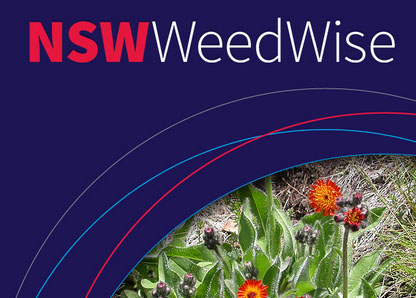Prevention is the most effective method of dealing with weeds. Once a weed has entered an area and become established, eradication is far more expensive and it is likely that greater resources will be required to control its further spread and reduce its impact.
The first step in weed prevention, and the most cost effective means of managing weeds, is preventing the entry of new weeds into Australia.
Once a weed has entered Australia, early detection and eradication is crucial to reduce its potential environmental and economic impacts. It is much easier to treat weeds when present in small numbers than when they are well established.
Early detection and eradication requires an awareness and understanding of the factors that favour the establishment and spread of weeds, and applying appropriate management practices that can prevent or reduce the risks.
The importance of weed spread prevention has grown with the recognition that the spread of most weeds occurs through similar pathways, such as the movement of goods, animals and vehicles contaminated with weed seeds. Currently, individual states and territories have different approaches to managing the spread of weeds.
Weed prevention in agriculture
In agriculture, the pathways for spread include transported livestock and fodder, contaminated crop and pasture seeds, deliberate introductions of new species, and contaminated machinery such as harvesters and recreational vehicles (including boats which can spread water weeds).
There are many ways to prevent weeds in agricultural activities which are well known including:
Restricting the opportunity for new weeds to invade and spread:
- Be vigilant about introducing stock, fodder or seed onto your property to ensure weeds will not be introduced.
- When buying stock, find out where the stock has come from and what weeds infest that area.
- Buy certified weed free fodder and seed where possible.
- Restrict the movement of vehicles and machinery on your property in periods when seeds are likely to spread.
- Establish tracks and laneways along which vehicle movement can be concentrated.
- Wash down vehicles which have been in known infested areas.
- Do not allow machinery or vehicles to enter your property unless they are clean.
Quarantine:
- Hold livestock that may be infested with seed in a single location until they are shorn or until weed seeds have had the chance to pass through their digestive system.
- Feed out infested fodder in a feed lot type situation only and introduce clean fodder to stock.
Restricting the spread of existing weed infestations:
- Carry out control works prior to other works.
- Slash and cultivate when weeds are outside of seeding period.
- Work the clean area first and the infested area last. Work from the outside in and clean down equipment prior to moving into a clean area.
Monitor:
- Continually monitor weed infestations and carry out control works.
Weed prevention in your backyard
Another significant cause of weed spread is inappropriate use and disposal of garden waste.
There are a large number of potential weeds in Australian gardens. Private gardens contain over 4000 plant species with weed potential, while botanic gardens hold approximately 5000 species of plants with weed potential. The likelihood that any particular plant will become a weed is difficult to predict; however, the CSIRO has estimated that an average of 10 weed species establish in Australia each year.
Measures for weed prevention in your backyard include:
- Choose plants that are indigenous to your area.
- Choose plants that are unlikely to become weeds in your area.
- Check existing garden plants are safe.
- Remove potentially weedy plants that may grow too vigorously or have multitudes of seeds.
- Dispose of garden waste correctly.
- Be careful not to spread weeds.
- Place mulch on soil surfaces in the garden to reduce weed growth.

